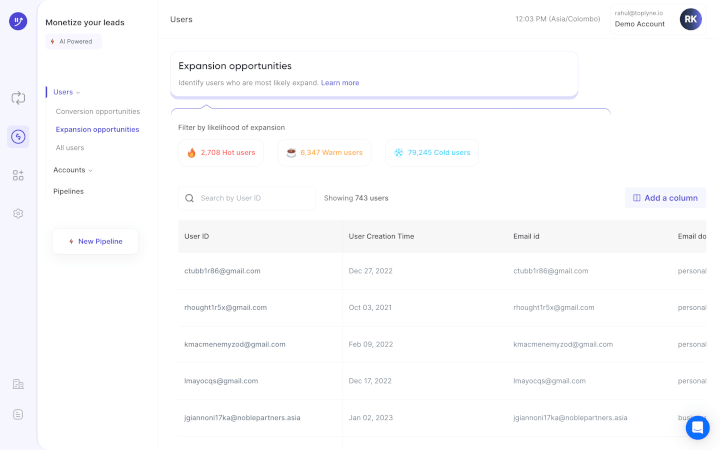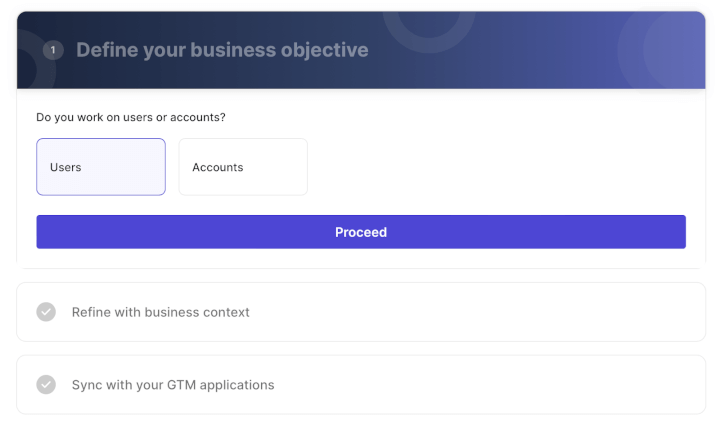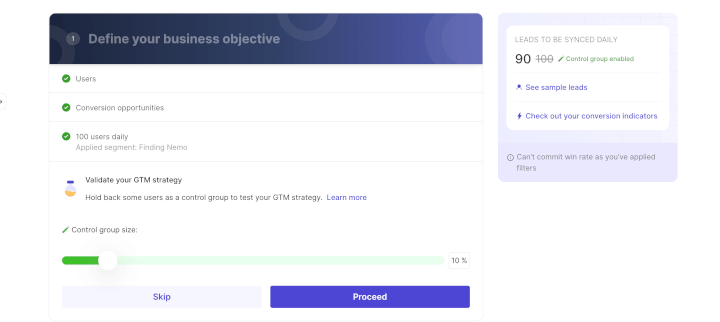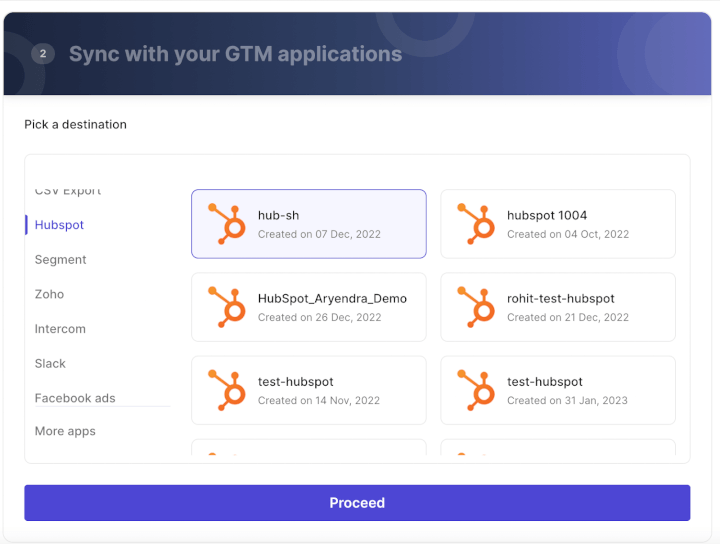11 Essential Growth Metrics and How to Boost Them

Do you ever wish you could see the future of your SaaS company?
Well, growth metrics can help you do just that!
But not like a fortune teller — more like a doctor 🩺.
Growth metrics measure the pulse of your business to tell you if it’s growing sustainably or flat-lining. ͏📉

Want to know more?
In this article, we’ll cover what growth metrics are and 11 of the most vital ones you should be tracking. We’ll also provide some fantastic tips to improve them.
Ready to revive your business growth? 🫀
Let’s go!
What Are Growth Metrics?
Simply put, growth metrics measure a company’s development over time to help you make informed business decisions.
Tracking growth metrics can help you measure and predict:
💸 Your revenue growth and progress.
📈 Which products, services, and marketing channels have growth potential.
⚒️ What areas of your company need improvement.
🔥 Which initiatives have the best ROI (Return on Investment).
But there are so many different growth metrics you could track.
Let’s look at some of the most essential ones.
What Are the Most Important Growth Metrics to Track?
CAC, CLV, MRR, NPS — Do you feel lost in the sea of metric acronyms? 🌊
We’re coming to the rescue. 🚤
We’ve divided these 11 SaaS metrics into categories based on whether they track:
- Customer Acquisition
- Revenue
- Customer Satisfaction
Without further ado, here are 11 essential growth metrics you should be tracking:
A. Acquisition Metrics
Acquisition metrics track the growth rate of your user base. Good customer acquisition stats indicate strong growth marketing and sales performance!
Here are three insightful acquisition-based performance metrics every product manager should track:
1. Customer Acquisition Cost
Customer Acquisition Cost (CAC) is the total amount you spend on attracting and converting each customer.
If you keep this number low, you’ll improve your gross margin — that’s more profit for your company 🤑.
How to calculate:

2. Conversion Rate
Conversion rate is the percentage of leads (potential customers) that become paying customers.
Imagine your SaaS product has 10,000 paying customers.
Sounds great, right?

Not so fast!
Let’s imagine that the above figure is only 2% of all your total leads. That’s A LOT of potential revenue you’re missing out on.

But don’t worry! You can boost your conversion rate by working on your website's user experience (UX), onboarding process, or your pricing model.
Hot Tip: Have you considered freemium? You can boost sales growth by offering a free plan. From there, Toplyne can help you monetize your free users and drive premium conversions.
How to calculate:

3. CLV to CAC Ratio
By calculating your Customer Lifetime Value (CLV) to Customer Acquisition Cost (CAC) ratio, you’ll learn how much you earn from customers for every dollar you spend acquiring them.
You may think this ratio should be as high as possible. But actually, the goldilocks ratio (where it’s “just right”) is around 3:1. That means you make $3 for every $1 you spend 👌.
You see, if the ratio is too low (1:1 or lower), there won’t be any profit.
If it’s too high, your spending may not match your customers' worth. That could spell bad news for retention, as your customers may feel undervalued.
Your CLV to CAC ratio tells customers:

How to calculate it:

B. Revenue Metrics
Tracking revenue helps you understand what’s making or costing you money. This way, you can focus on what’s raking in cash and improve on what’s draining it!
1. Revenue Growth Rate
This one’s all about how much profit your company makes over time.
You should check your revenue growth every quarter or so. That way, you can attribute an increase in revenue to actions taken during that period.
Did you launch a new product add-on or marketing channel?
Your revenue growth rate tells you if your business strategies are working, and how fast. 🏎️💨

How to calculate:

2. Monthly Recurring Revenue & Annual Recurring Revenue
Monthly Recurring Revenue (MRR) and Annual Recurring Revenue (ARR) measure your expected monthly and yearly income, respectively.
A consistent MRR and ARR mean your existing customer base is satisfied. Even better, an increase indicates you're getting new customers or upselling existing ones!
Other helpful recurring revenue metrics include:
- MRR growth rate: The percentage of MRR growth in a period.
- Expansion MRR: Extra revenue you generate from upselling and cross-selling to your existing customer base.
How to calculate:

3. Revenue Churn Rate
Revenue churn refers to recurring revenue you’ve lost in a period. This happens when customers leave your product or downgrade their plan.
Either way, it’s not great news…

But it’s still important to track this metric so you can figure out how to fix it 🔧.

You could combat revenue churn by:
- Asking for customer feedback.
- Offering incentives for at-risk customers.
- Offering discounts for long-term contracts.
How to calculate:

4. Customer Lifetime Value
Customer Lifetime Value (CLV) is the average revenue customers generate for your company over the entire relationship. Think of this as the monetary value of customer retention.
You want this number to be high since it shows if you’re bringing in high-value customers.
How high, you ask?

Sky high. 😜
However, you must also consider how much you spend to convert each customer (your Customer Acquisition Cost or CAC). If your CAC is too high, it’ll take you longer to make a profit.
How to calculate:

C. Customer Satisfaction Metrics
Success isn’t just about how many customers you can attract. Customer loyalty is a huge factor too.
The following business metrics measure customer success — how happy your customers are with your product:
1. Activation Rate
Activation rate is the time it takes a new customer to see value in your product. This is the famous “aha! moment” 💡.
Depending on your specific product, the activation point could be based on feature use, time spent on the app, social media sharing, etc.
A quick time-to-value is vital for Product-Led Growth (PLG).
Why?
Because if it takes too long, something’s wrong 👀…
If the “aha!” is delayed, customers won’t stay! 🎵

All jokes and rhyming masterpieces aside, here are some product led growth ideas to speed up time-to-activation:
- Investigate the friction points (lengthy sign-up forms) that make onboarding a hassle.
- Gamify your product tour with checklists and achievements.
- Use a tool like Toplyne to experiment with in-app nudges and other strategies.
How to calculate:

2. Customer Retention Rate and Churn Rate
Customer Retention Rate is the percentage of customers who stick with your SaaS product during a given period. It’s a strong indicator of customer loyalty.
On the other hand, customer churn rate is the percentage of customers who just didn’t find your product sticky enough! 🍯
How to calculate:

3. Customer Effort Score
Customer Effort Score calculates how easy it is to browse your website, sign up for your product, make payments, etc.
You don’t want your customers to feel like this while using your platform:

How to calculate:
After a customer performs an action, you can ask them if they agree or disagree with a statement like:
“X-company made Y-task easy.”
They can then respond on a scale from 1 (Strongly Disagree) to 7 (Strongly Agree).
Then, use this formula:

CES = Sum of all scoresNumber of responses
4. Net Promoter Score
Your customers should be fans of your products.
Like this:

Well, maybe not 😅.
Net Promoter Score (NPS) measures how inclined your customers are to recommend your service to others.
Tip: High-promoters may also be good candidates for upselling.
How to calculate:
Ask your customers how likely they are to recommend your product on a scale from 1 to 10.
People who give scores of 9 to 10 are likely active promoters, while scores of 6 and below can be considered detractors.
Next, use this formula:

Five Simple Steps to Amplify Your Growth Metrics
Numbers not looking quite how you want them to?
Not to worry. Here are five awesome tips to send your performance metrics through the roof:
1. Figure Out What’s Important
If you track every little thing, your business growth reports would probably look like this:

It’s best to narrow it down by deciding what’s most important to your SaaS company in its current stage.
For example, a new SaaS startup can’t really track MRR growth rate or CLV. That’s because a new business won’t have sufficient data.
Instead, here are some business metrics you could track in each stage of your startup:
- Early stages: Focus on tracking growth metrics like CAC and conversion rate. These measure growth marketing success and customer response.
- Middle stages: Start tracking ROI, CLV, and revenue growth rate to understand your long-term growth sustainability.
- Final stages: Analyze metrics via segments (e.g., individual channels or campaigns) for increased accuracy.
2. Set Goals
Once you’ve determined what you’re tracking, the next step is to set goals and make them SMART. That’s Specific, Measurable, Attainable, Reasonable, and Time-Sensitive.
Here are some examples:
❌ Achieve a 95% conversion rate. (Not attainable and no time limit = Not SMART)
✅ Decrease CAC by 20% by the end of Q3.
✅ Reach an MRR of $10,000 before January 2024.
3. Gather your Data
Tracking all these metrics seems like a bit of a brain chore, right?

Luckily, there are analytics tools that can nerd out and do it for you!
Examples include:
- Google Analytics
- Amplitude
- Mixpanel
- Segment
After you set up your data collection channels, you can use a tool like Toplyne to bring all your data together effortlessly.
Now you can really start upping those numbers.
4. Identify Promising Leads
What if you knew which leads were most likely going to buy? 🔮
Your sales team could avoid spending time and money chasing leads that’ll never convert. Now that would boost your growth metrics!
Here’s how companies like Canva and Vercel generate sales pipeline from their self-serve funnel using Toplyne:
- Step 1/7: Create monetization playbooks to surface conversion and expansion opportunities (leads most likely to convert to paying customers, and teams most likely to grow into larger teams)

- Step 2/7: Choose the right leads to target – users (individual users) or accounts (a group of users with an organization).

- Step 3/7: Select the frequency at which you would want leads synced in your GTM apps.

- Step 4/7: Define how many leads you want by either the number of leads or your expected win rate, depending on your sales capacity and GTM strategy.

- Step 5/7: Build custom segments - Build custom segments based on And/Or logic at the deepest level of sub-properties within your product analytics.

- Step 6/7: Validate your GTM strategy - Hold back some users as a control group to test your GTM strategy.

- Step 7/7: Sync your product qualified pipeline into your GTM destinations - CRMs, sales & marketing execution tools, and customer engagement platforms.

There’s only one thing left to do…
Supercharge Your Growth Metrics with Toplyne!
Are you ready to kick your SaaS company’s growth into high gear? 🏁
You can use the metrics and tips in this guide to speed up your growth and overtake the competition!

With a little assistance, the #1 spot is yours to take. 🥇
Start reaching out to red-hot leads with effective GTM strategies today with the help of Toplyne.
Sign up with Toplyne for free to master your SaaS metrics and leave competitors in the dust! 💨


.svg)









.png)